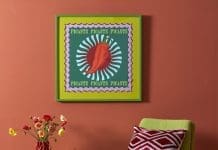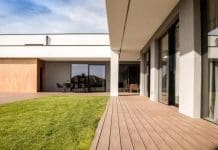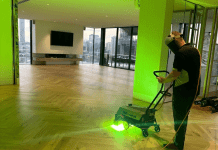We constantly hear the saying ‘kitchen is the heart of the home’ so it’s no wonder that when building or renovating, this space comes with a lot of pressure to get right.
Having a highly functional and ergonomic kitchen is just as important — dare we say it, more important — than one that looks good. So before getting swept up in cabinetry finishes or splashbacks, take the time to consider a layout that will best suit your lifestyle.
In this article, we’re discussing the most popular kitchen configurations.
Related article: 9 ways to design indoor outdoor living into your home
Related article: Stylist-approved tips to add cosiness to open plan homes
One wall
Starting with the simplest layout is the ‘one wall’ kitchen or ‘pullman’ as it’s sometimes referred to. As the name suggests, this design is when cabinets and appliances are fixed on a single wall, but modern designs also include an island, which evolves the space into more of a galley style with entry points at both sides.
This kitchen layout is ideal for people who need to fit a kitchen into a smaller space, such as a townhouse or studio, as it’s the ultimate space saver.
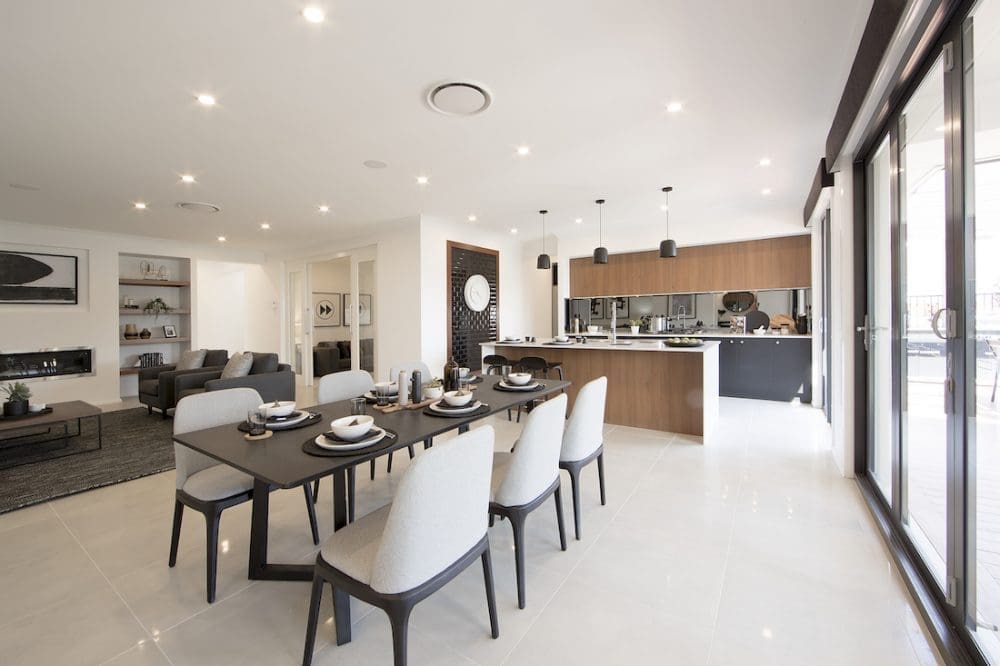
Regardless of what kitchen layout you use, you can maximise storage by opting for drawers over cupboard doors wherever possible. Drawers allow you to take advantage of the full depth of the space and you can also incorporate hidden half-height drawers inside.
Galley
A galley-style kitchen features two parallel walls of cabinetry and appliances, with access at both ends. Because of this layout, it’s often called a walk-through kitchen.
One of the biggest perks is how efficiently it uses space. You can fit more overhead cabinets and storage here than in most open-plan kitchens. It also offers almost double the bench and storage space of a single-wall design. Another bonus is that you avoid tricky corner cupboards or complicated benchtop shapes, which can save on costs.
However, this layout isn’t ideal for people who love to entertain around the kitchen. That’s one reason galley kitchens have become less common in modern open-plan homes.
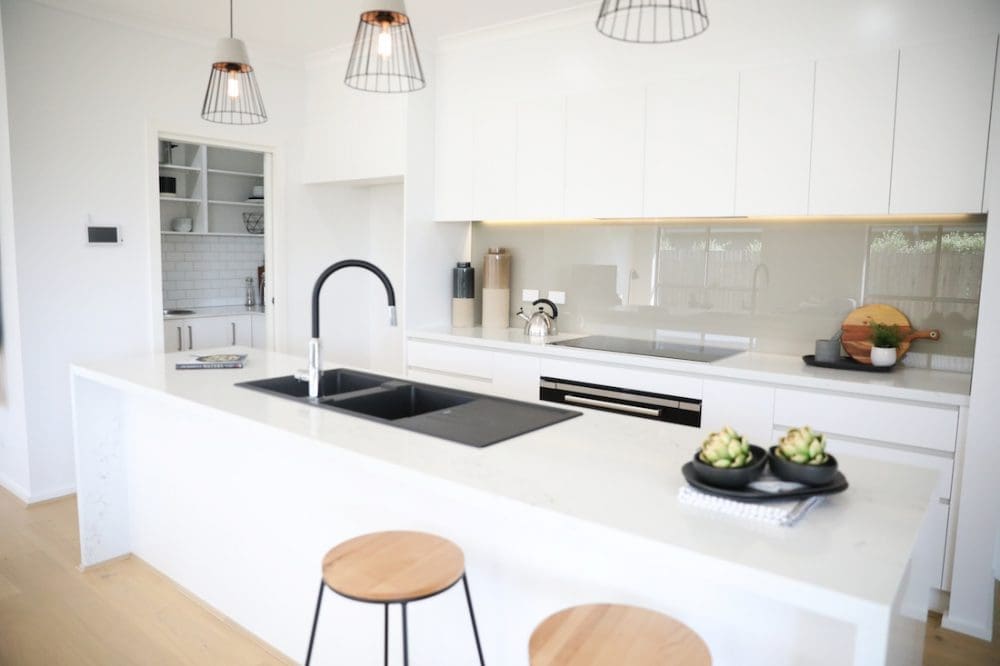
The most important thing when designing your kitchen is to be realistic about what’s achievable in your space. As our design crush Neale Whitaker says ‘Luxury shouldn’t feel cramped’. It may not be possible to fit in every inclusion you want. Prioritise what’s most important to you and execute those elements well.
L shaped
A popular kitchen layout is the L-shape, as it makes the most of storage and bench space in open-plan homes.
It’s a flexible design, usually with cabinetry running along two adjoining walls to form the shape of an ‘L’. This layout is great for spaces that don’t have room for an island but still need a generous kitchen zone. Another big plus is how easily you can move around — no awkward traffic jams or bumping into people.
It works beautifully when there’s a window along one wall, with the sink positioned to overlook the view. If it’s a bi-fold window, even better — it can double as a serving bar for effortless indoor-outdoor entertaining. You can also tuck a small workspace into the joinery, keeping everything cohesive and practical.
Despite all these pros, if you’ve got the space, an island kitchen is still the most ergonomic option overall.
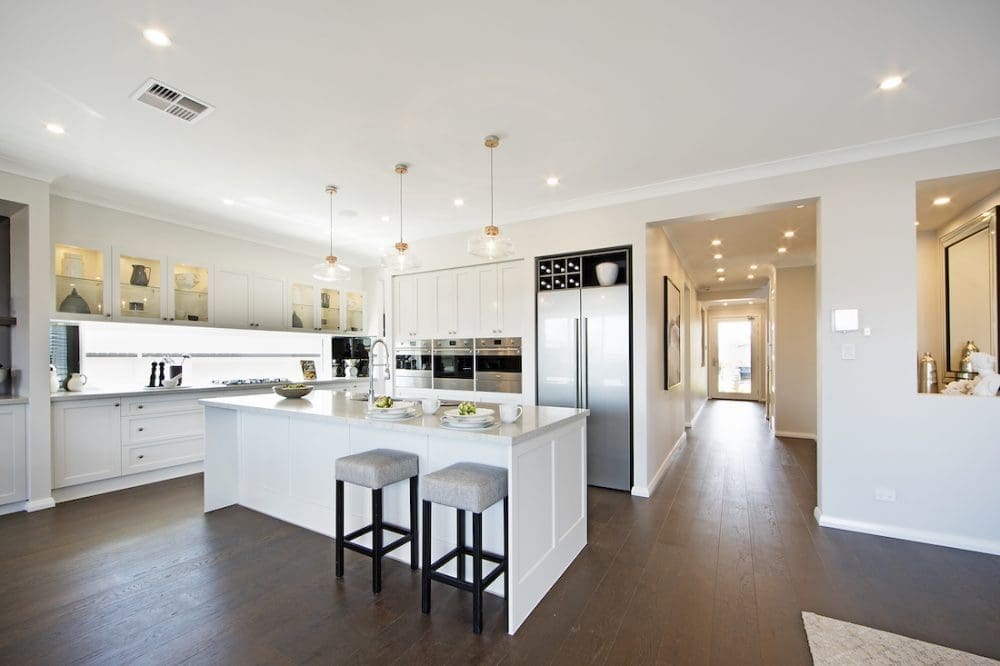
U-shaped
A popular design for traditional style homes is to run cabinetry along three walls to form the letter ‘U’. Often the central wall would have a large window with a sink below, and overhead cupboards along the remaining walls. Many modern designs also include an island bench in the centre.
Depending on the width of the walkways, this design can still allow good flow, plenty of workspace and storage space.
We love the growing trend of hiding a butler’s pantry behind concealed doors in the same material as your kitchen cabinets. It creates an ultra-streamlined look.

With an island
Our favourite kitchen designs generally always incorporate an island for reasons to do with looks and function. An island bench serves many purposes — from more workspace to prepare food, a place to eat informal meals, for children to do homework, and to entertain guests while you’re preparing meals. Some kitchen islands also include a built-in dining table.
The most ergonomic kitchen layouts use a ‘triangle’ design where there are only a few strides between the sink, fridge and oven in the shape of a work triangle. Most kitchen islands feature a sink or cooktop which help to condense the size of this work triangle, reducing the walking distance between these most used zones of the kitchen and therefore making it far more efficient.
For aesthetic reasons, an island is a great way to introduce serious wow-factor into your home. Some ideas to elevate your kitchen island are to use a stunning piece of stone as the countertop, playing with designs to create an island that resembles furniture with freestanding ‘legs’, or incorporating an open bookshelf under the island. Islands also lend themselves well to feature lighting above, whether that’s a set of pendant lights, architectural suspended light, or a large void or skylight to let in natural light.
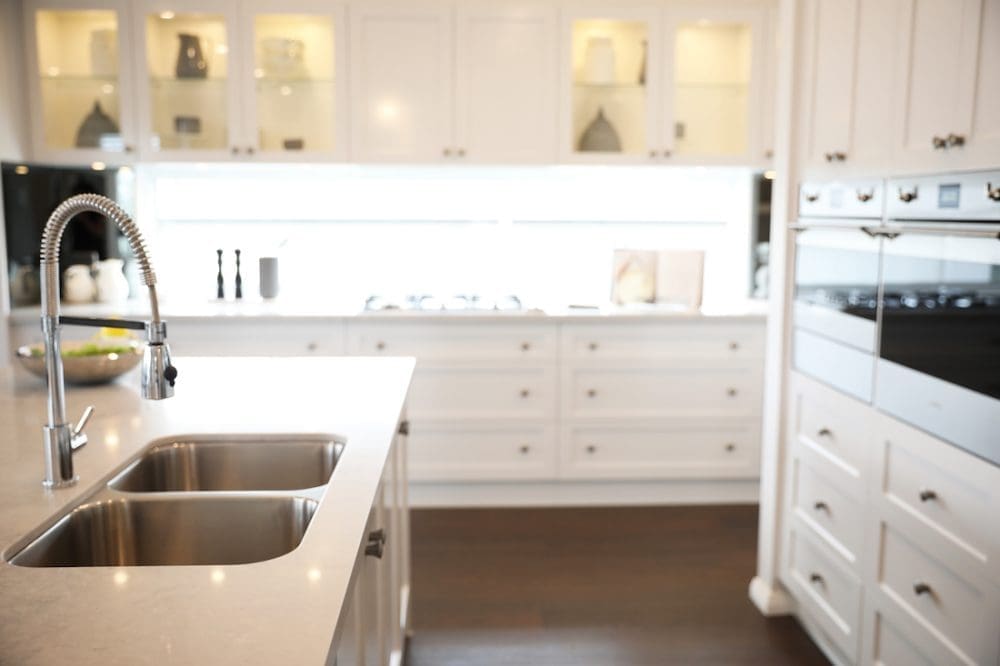
If you live in or around Canberra, there is an impressive range of kitchen displays to check out at Denman Prospect display village — a must-visit destination for anyone planning a new home or major renovation.
We hope this guide on the most popular kitchen configurations helps you with your planning.



